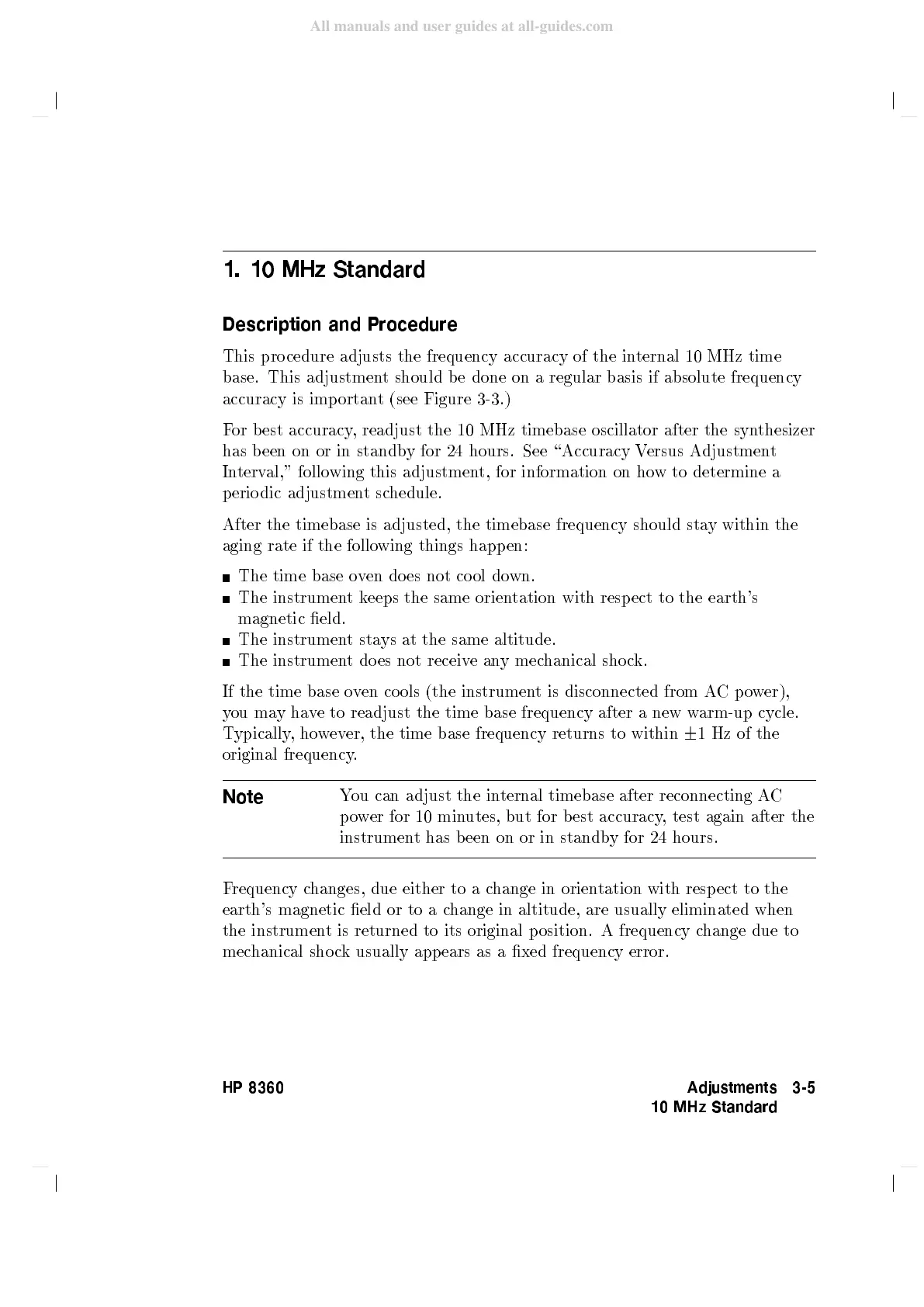1.
10
MHz
Standard
Description
and Procedure
This pro
cedure adjusts
the
frequency
accuracy
of
the
in
ternal
10
MHz
time
base.
This
adjustmen
t
should
b
e
done
on
a
regular
basis
if absolute
frequency
accuracy
is
imp
ortant
(see Figure
3-3.)
F
or
b
est
accuracy,
readjust the
10
MHz
timebase
oscillator
after
the
syn
thesizer
has
b
een on
or
in
standb
y
for
24
hours.
See
\Accuracy
V
ersus
Adjustmen
t
In
terv
al,"
follo
wing
this
adjustmen
t,
for
information
on
ho
w
to
determine
a
p
erio dic
adjustmen
t
sc
hedule.
After
the
timebase
is
adjusted,
the
timebase
frequency
should
sta
y
within
the
aging
rate
if
the
following
things happ
en:
The
time
base
o
v
en
do
es
not
co
ol
down.
The
instrumen
t
k
eeps
the
same
orien
tation
with
resp
ect
to
the
earth's
magnetic
eld.
The
instrumen
t
sta
ys
at
the
same
altitude.
The
instrumen
t
do
es
not
receiv
e
an
y
mec
hanical
sho
c
k.
If
the
time
base
o
v
en
co
ols
(the
instrumen
t
is
disconnected
from A
Cp
o
w
er),
y
ou
ma
y
ha
v
e
to
readjust
the
time
base
frequency
after
a
new
w
arm-up
cycle.
T
ypically
,
how
ever,
the time
base
frequency
returns
to
within
6
1
Hz
of
the
original
frequency
.
Note
You
can adjust
the in
ternal timebase
after
reconnecting
A
C
p
ow
er for
10 min
utes,
but
for
b
est
accuracy
,
test
again
after
the
instrumen
t
has
b
een
on
or
in
standby
for 24
hours.
Frequency c
hanges, due either to a c
hange in orien
tation with resp ect to the
earth's magnetic eld or to a c
hange in altitude, are usually
eliminated when
the instrumen
t is returned to its original p osition. A frequency c
hange due to
mechanical sho c
k usually appears as a xed frequency error.
HP 8360 Adjustments
10 MHz Standard
3-5

